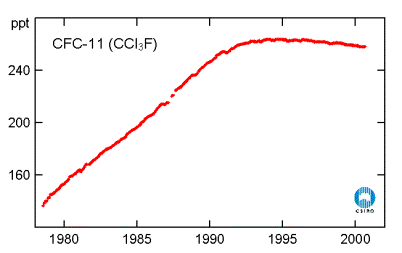Introduction
Earth is the only planet we have. There has long been talk of the colonization of other planets, but if that is ever going to be possible it is many decades away. Consider for a minute; Mars is the solar-system planet with the most Earth-like environment, yet it is much more hostile than Antarctica or the driest desert on Earth – probably Mars is more hostile than the sea-beds on the shallower parts of the continental shelves; why have we not colonised these areas? There may be more hospitable planets near other stars, but moving large numbers of people and large loads of materials over that sort of distance is beyond our abilities for the foreseeable future.Almost all my Internet pages relate in one way or another to the environment. Why have I written this page? I'm not at all sure; it is certainly not a summary of all else.
Fossil fuels
Humanity is consuming fossil fuels about a million times faster than the rate at which they form. Production is predicted to peak sometime between 2004 and 2008, and then start a long decline. (Hubbert's Peak: The Impending World Oil Shortage, by Kenneth Deffeyes) We have known the limitations to the petroleum supply for many years, yet very few people make any effort to minimize their consumption; a remarkably selfish attitude, especially when one considers that it will be our children who will pay the price!The world's petroleum supply is declining: it has been reported (David Francis, South African Christian Science Monitor) that:
- In 2002, the world used four times as much oil as was newly found;
- The rate of discovery of worldwide oil reserves, after declining for 40 years, has slowed to a trickle. In 2000, there were 16 large discoveries of oil, eight in 2001, three in 2002, and none last year (2003), according to the Oil Depletion Analysis Centre in London;
- All the giant fields, such as those in the Middle East, have already been discovered. These giants are relatively easy to find. The last major oil field, Cantarell, off the shore of Mexico, was discovered in 1976.

CFCs
We know that our activities can have deleterious effects on the atmosphere, our experience with chlorofluorocarbons, the ozone 'hole', and ultraviolet radiation taught us that. We know from that experience that, at least in some cases, we can turn around the damage if we make the effort.The graph on the right, from the Australian Commonwealth Scientific and Industrial Research Organization (CSIRO), shows the rise in atmospheric CFCs, then the beginning of the fall.
As a civilization we are destroying our forests, causing the greatest
rate of extinctions for many millions of years, causing salinisation
and desertification of farmland at very high rates, mining all the
easily accessible minerals with no consideration for those who will
come after us, and polluting our air, water and soils.

Mining
This photo shows an iron mine in the Middleback ranges in South Australia. The rocks are over a billion years old, the hill has stood for perhaps one hundred million years; it will be destroyed in a fraction of my lifetime.It is true that it would be very expensive to change to a way of life that is completely sustainable. It is also true that we could go a long way toward that goal without much effort at all. But our leaders are too busy sacrificing all that is valuable on Earth to Mammon to adopt a precautionary approach.
To a large extent it is not so much people who are running the world, it is the capitalist system, which seems to react amorally to any opportunity that can turn a profit. It is up to us to reign it in and turn our use of the biosphere to one that is sustainable. Moneyed interests dominate our governments; they will not change unless they are forced to. The great majority of people can see the damage that is being done, but they are either too apathetic or too shortsighted to try to stop it. Three quotes are appropriate here:
- "Every nation has the government it deserves." (Joseph de Maistre)
- "If you think you are too small to make a difference, you've never been in a room with a mosquito." (Annita Roddick)
- "I am a citizen, not of Athens or of Greece, but of the world." (Socrates)




